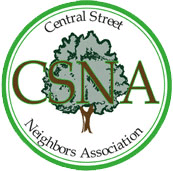North or South Branch is Closest Library for Most
A recent online story on Evanston libraries set up a divisive and inaccurate class/race argument by focusing on census tracts in which the north and south branch are "located." This is misleading rhetoric in several ways, including that the north and south branch are each at the very edge of a census tract, that census tracts are somewhat arbitrary and certainly not monolithic, and that the libraries were "located" long before most current residents. But more important, it misses the point that for most Evanstonians, there is no library at all in their "census tract." Since nearly everyone has to travel by foot, bike, car, or public transportation to use a library, a more practical analysis would instead ask, for every Evanstonian, "What library is closest?"
As simple geography and the map below (click Read More to see) demonstrate, the answer is that, for most Evanstonians, either the north or south branch is closer and more convenient than the main branch.
This is true for every single Evanstonian living south of Dempster, including nearly every resident of the 8th, 9th, or 3rd Ward. It is also true for most of the lower-income residents of the 5th Ward and the 2nd Ward; for half the 5th Ward, the main branch is closer, but that includes the two precincts largely populated by students and Civic Center neighbors. For about half of the 2nd Ward, a branch other than the main branch is closer.
Note that the population for whom the main branch is closer includes most Northwestern students, who already have the NU libraries on campus. It's NU students who account for most of the non-white population in the census tract near the main branch. In the 2nd Ward, the main branch is most convenient for the precinct that includes Optima Views, Hilton Gardens, the Siena project, and many large, historic homes. For 2nd warders living south of the high school, the south branch is closer.
The indisputable fact is this: closing two of the three branches will result in less library access for all of Evanston, and will make getting to and using a library more time-consuming for most Evanstonians. Right now, a large majority of Evanstonians have a library within a mile of their home; if two branches are closed, a large majority will not. Closing two of three branches will undeniably result in less library utilization. Those inconvenienced or disadvantaged will include not only some well-to-do, but many if not most District 65 and ETHS students of color or from low-income households.
In short, to make a geographic, class, or race argument for closing the north and south branches is wrong on multiple levels.
Forums:
- Log in to post comments
